When it comes to feeding a nursing mother, many people have associations with strict rules, restrictions, a strict diet and big problems for the baby, if the mother has eaten "something is not right." The topic of a diet during lactation is shrouded in various myths and horror stories, and young moms do not usually know who to listen to: pediatricians, grandmothers, girlfriends or breastfeeding consultants. Recommendations and opinions are contradictory, so we will understand together.
We advise you to add this page to your bookmarks, the page will be constantly updated and links will be added that describe (pros and cons) food for a nursing woman in the period breastfeeding. The article has a lot of video tips, we recommend for viewing.
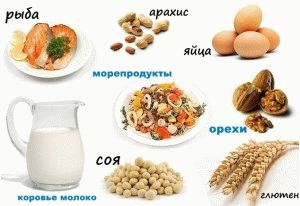 And then the food?
And then the food?
Strictly speaking, lactation does not depend on my mother's nutrition. The process of milk production is regulated only by hormones (prolactin and oxytocin). Self breast milk It is produced from the elements of blood plasma, therefore, nutrition affects lactation in much the same way as the composition of blood - very indirectly, slightly changing the content of certain elements. Even with very poor nutrition, a woman is able to breastfeed, and the baby will not suffer from a lack of nutrients. The body of the nursing mother is set up in such a way that everything useful and necessary for the baby gets into the milk, and if anyone suffers from a deficiency of the necessary substances, it is the mother herself. It turns out that a nursing mother needs to monitor nutrition in order for her body to have enough resources for herself, since the baby will take her own in any case.
We have already written an article on the topic of nutrition, you can read:
Video №1
What and how to eat nursing mom
The diet of a nursing mother is not much different from the diet during pregnancy, and the recommendations for catering are similar.
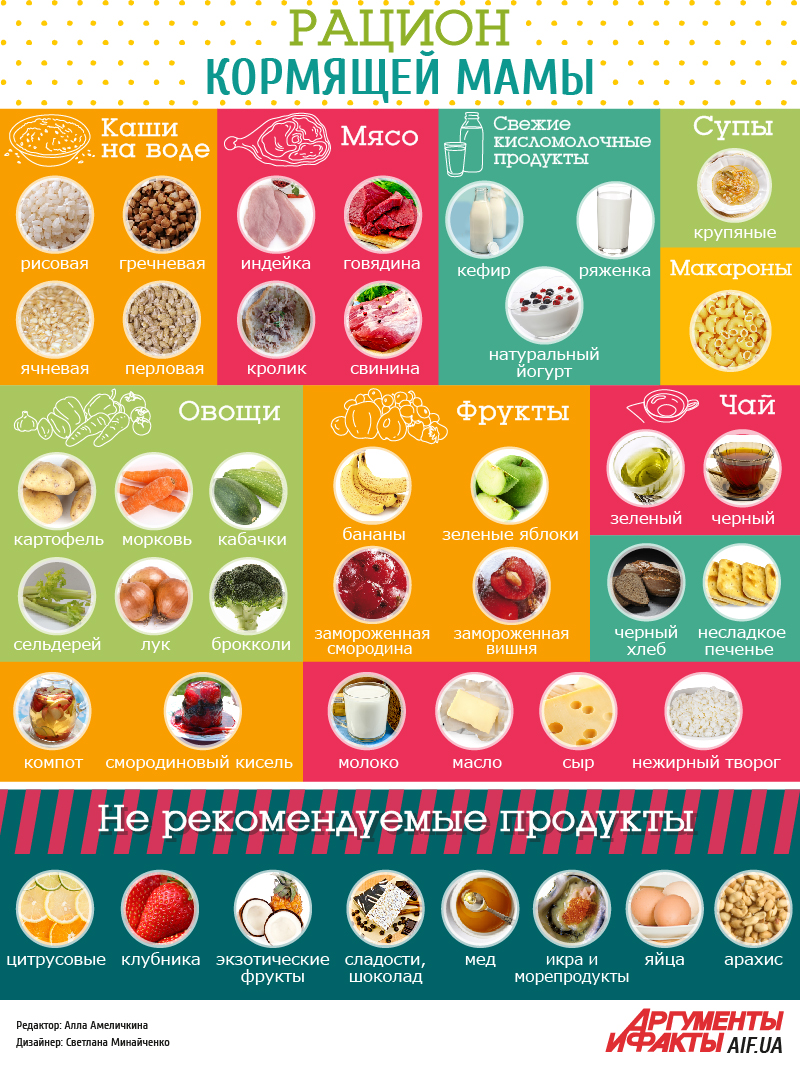
- Daily caloric content, it is advisable to increase by 500-600 kcal compared with the normal state. If you do not go beyond these numbers, then it will not affect the figure. Milk production requires an increased consumption of energy, so extra calories have much to spend.
- It is recommended to eat often and in small portions in order to provide the body with a constant supply of nutrients. Trying to enter meals in any regime makes no special sense, it is enough to eat by appetite. It’s good to have something for snacking. Given that at first the baby is at the breast for a long time, the feeling of hunger can be caught during or immediately after feeding.
- The basis of nutrition of a nursing mother after childbirth is the classic food pyramid. The diet must contain cereals, meat, and sometimes fish, vegetables and fruits. By and large, the more varied the food, the better. There are no strict prohibitions, but there are some products with which you should be more careful and introduce them into the diet in a special way. They will be discussed separately.
- A nursing woman needs to drink plenty of fluids. Usually it is about 2 liters per day, but if you don’t really want to drink, you shouldn’t pour water into yourself. Here it is important to find a middle ground and not to get involved in a watering, since it is just a sufficient amount of fluid, which is different for everyone, determined by weight and constitution.
Video №2
"It is impossible" for the feeding mother
Strictly speaking, there are no strict prohibitions and restrictions on feeding a nursing mother. However, some products are associated with the risk of allergies in the baby, so their use is better to limit and generally eat with caution.
- Protein cow milk. Contrary to popular belief about the benefits of cow's milk for babies, this product is highly undesirable to use not only the crumbs, but also his mother. By its composition, cow's milk is very far from human and contains proteins that are foreign to our body. Eating whole cow's milk from your mom can create problems with your baby’s intestines or cause allergies. It is quite another thing - products from fermented milk (kefir, ryazhenka, cheese). There, the same protein is found in a different, somewhat modified form, and the body is perceived much better.
- Vegetable protein gluten. All moms have heard and know about gluten-free cereals for babies, but not all exclude this protein from their diet. Gluten is found in all cereals, with the exception of rice, buckwheat and corn. Sometimes it causes allergies, so you need to be more careful with other cereals, introduce them gradually and monitor the reaction.
- Chemical additives (dyes, preservatives, flavors). The body of a newborn child has not yet prepared for such “chemical attacks”, and the fact that an adult goes unnoticed can cause allergies in a baby.
- Exotic fruits. At this point, it all depends on the region of residence. So, in Spain, oranges are used for the first feeding, and in our latitudes they are exotic. The best option would be to eat local seasonal fruit, which reduces the risk of an undesirable reaction.
- Fruits and vegetables are red. A potential allergen is precisely the red pigment, and in large doses. So a child can be “sprinkled” from a whole plate of strawberries or tomato salad, and there will be nothing from a couple of berries or spoons. In some cases, the allergen can be eliminated altogether, for example, by cutting off the skin from a red apple.
More about the fact that you can not eat a nursing mother (and that is absolutely not recommended for mothers during GW) — >
It is believed that if the mother is not allergic to anything, then the baby is unlikely to have it. Sometimes, quite unexpectedly, there appears a reaction to seemingly innocent and habitual products, to certain varieties of fish or meat. Attention to the reactions of the child and the timely elimination of unwanted product will help avoid protracted problems. Usually, mothers gradually expand their diets and by the age of 6 months they don’t deny themselves anything, because the baby’s body adapts to new substances and becomes able to perceive them.
Video number 3
Nutrition Myths on Breastfeeding
There are many misconceptions on the topic of nutrition for a nursing mother, which are passed on from mouth to mouth and confuse moms. What of this pure water is not true, and what is still the place to be?
- The more fluid enters the body of a nursing mother, the more milk there will be. We have already determined that the amount of milk depends only on the hormone prolactin, produced as a result of sucking the breast, therefore, it is impossible to increase the production of milk by increasing fluid intake. However, another hormone, oxytocin, is involved in lactation. He is responsible for the "leakage" of milk from the breast. The release of this hormone provokes tides known to all women. Warm drinking starts the production of oxytocin in the body, so after a cup of tea it is easier to feed - the milk flows into the mouth itself. This process does not affect the amount of milk, so if you need more milk, you do not need to adjust the diet or increase fluid intake. The only way to achieve the effect - more often put the child to the chest.
- Nuts increase lactation and make milk fatter. In general, the composition of breast milk is almost constant regardless of the products used, and it’s impossible to increase milk fat content with the help of food. Passion for nuts does not increase the fat content of milk, but changes the composition of fats, making the milk more viscous, which means it is difficult to get for the baby.
- Cucumbers, cabbage and grapes cause increased gas formation in the baby. This is not really a myth, such a reaction can really be, but if the mother herself does not suffer from abdominal distention after these products, then the child is probably not afraid.
- Onions, garlic and spices make milk tasteless. Here, too, is not so simple. The taste of milk can vary, but this does not mean that the baby will refuse from the breast, so it is not necessary to absolutely refuse these products. In existing studies on this subject, children on HB did not neglect their mother's breasts.
Video №4
It turns out that feeding a nursing mother is not associated with particular difficulties and is not something transcendent. With care you can eat absolutely everything.
It is believed that the more varied the food of the mother, the less problems with digestion and allergies in the baby, because the baby breastfed through mom's milk gets acquainted with different products and his body adapts to them. When we say “you can do anything”, we mean everything within the framework of a healthy diet. Fast food, alcohol and a huge amount of sweet is not the place in the diet of a nursing mother. By and large, adhering to the principles of healthy eating does not hurt anyone, but for young mothers this is especially important. Often, after the birth of a child, the whole family moves on proper nutritionwhich in itself is a big plus for everyone.
From friends you can hear so many tips that it becomes altogether incomprehensible how to eat a nursing mother. Only buckwheat and veal, washing it all down with water? Let's try to sort out and debunk the myths. We focus on nutrition during lactation, simultaneously touching the diet during pregnancy. How is this related? First, modern sources claim that the principles of healthy nutrition are the same for both pregnant and nursing women. And secondly, studies have shown that for lactation it is extremely important how a woman ate during pregnancy, and no less important - before its occurrence!
By the end of the first month of life of the child, when mothers feed on demand, a stable mature lactation is established. The amount of milk produced usually ranges from 750-1200 ml per day (on average, about 1 liter). This amount is maintained for the first six months of feeding before the start of complementary feeding.
What does the quantity and composition of milk depend on? The answer is one: these indicators meet the needs of the baby. Today it is well known that the milk of each woman is unique, it is intended for feeding a particular child and is ideally suited to him. And even the same mothers milk for different children will be different. The mother's body adapts to the needs of the baby and produces milk, depending on the child's full-term, its weight, etc.
The myth of "dairy" or "non-dairy" women has no basis, and the milk disappears mainly due to serious mistakes in the organization of breastfeeding, and this has nothing to do with the quality of nutrition. However, you must comply with certain conditions relating to nutrition, so that the natural mechanism works correctly.
To have enough energy
Milk production requires significant energy costs. Every day it takes about 700 calories. If for non-pregnant women about 2000 kcal per day is enough (according to WHO and European countries), then for pregnant women in the third trimester, 200 kcal / day is added to this amount, and during lactation another 500 kcal / day. The remaining necessary calories are taken from the woman's own fat reserves.
Weight gain during pregnancy includes a certain amount of adipose tissue (about 4 kg with an increase of 10-12 kg). These are the so-called fat depots or reserves that are needed for the energy maintenance of lactation.
It is very important what kind of nutritional status a woman had before pregnancy, that is, whether the nutrient supply covered the needs of the body. The recommended weight gain during pregnancy depends on the body mass index (BMI). This indicator best reflects the adequacy of nutrition before pregnancy. Lack of nutrition or excessive food intake is undesirable, and the balance between intake and nutrient intake is optimal. And more specifically, for a woman there is a need for a small margin, which increases during pregnancy and provides energy for lactation. This stock is manifested in the form of "roundness" that distinguish the female body.
Studies have shown that a sufficient fat content is important for the full flow of menstruation, ovulation and conception. Reducing the weight even by 10-15% of the normal can cause cycle disturbances. For carrying and feeding the child, the mother should not have a nutritional deficiency, it is more dangerous than its excess. There is scientific evidence that the lack of energy, protein, certain vitamins and trace elements can cause various defects in the fetus, as well as cause early toxicosis of pregnancy. For example, a deficiency of choline in the prenatal period can have consequences for a child at an older age and affect a decrease in the level of memory.
If a woman with insufficient weight after delivery starts to eat more, then nutrition will go first to fill the deficit of her body weight, and only then to lactation, and the volume of milk may still be insufficient. At the same time, it is proved that if a mother fed adequately before and during pregnancy, she would produce a normal amount of milk, even if she eats less than recommended. However, according to one study, the intake of energy in the body below 1800 kcal during the week still leads to a decrease in the volume of milk.
A complete diet for a nursing mother
Contrary to the opinion of the need for certain diets during gestation and feeding of the child, modern studies indicate that for a healthy woman fully fed before pregnancy, with the onset of motherhood, there is no need for a radical change in diet and, especially, for strict restrictions.
The authors of the National Program for the Optimization of Feeding Children in the First Year of Life in the Russian Federation (2010) believe that the nutrition of a woman during an interesting situation should be complete and varied, eating habits (food stereotypes) should be preserved: “All this will help ensure comfortable well-being, good mood and high activity of a pregnant woman ". The same principles apply to the nutrition of nursing women. Practice shows that well-being and mood are much more important for lactation than special teas. And if a woman has a snack, for example, with a favorite cookie with a small cup of cocoa, there will be no harm, but she will relax and her milk outflow will improve. Means for lactation give a similar effect: mom relaxes, tunes in a positive way.
What does “balanced, complete diet” and “adequate nutrition” mean? This means that the diet of a nursing and pregnant woman should every day be attended by the products of all presented food groups:
- bread, cereals, potatoes, pasta (5-11 servings daily),
- vegetables, fruits, berries (5-6 servings),
- dairy products - milk, kefir, yogurt, sour milk, ryazhenka, cottage cheese, cheese (2-3 servings),
- meat products, fish, beans, nuts (2-3 servings),
- fats, oils, sugar, sweets, sweet drinks (a little).
This list corresponds to the pyramid of healthy nutrition proposed by nutritionists from America in the 90s of the 20th century, and WHO recommendations on nutrition for pregnant women and nursing are based on it. The size of one serving is, say, a piece of bread, a medium-sized apple, a glass of milk, etc.
Fill the gap
Nutrients can be divided into two groups. Substances, the amount of which in breast milk depends on the nutrition of the mother: iodine, selenium, vitamins of group B, vitamin C, vitamin A.
With a varied diet, all of the above substances in sufficient quantities come with food. Therefore, the additional introduction of them in the form of dosage forms does not make sense. If these substances are not enough in the food consumed by the mother, then their intake to the baby with mother's milk decreases. However, an increase in the consumption of these substances by the mother quickly restores the necessary concentration in breast milk. Substances, the amount of which in milk does not depend on mom's nutrition: protein, calcium, iron, zinc, copper, folic acid, vitamin D.
Supplementing nursing mothers with drugs containing these substances does not increase their amount in breast milk. If a woman for some reason loses these substances with food, their current level in breast milk will be maintained at the expense of the reserves of her own organism.
Nursing mother drinking regime
Since the volume of production of breast milk in a girl is about 1 liter per day, she needs to drink a sufficient amount of fluid. The basic rule for lactation - you need to drink for thirst.
According to different sources, in the first days after birth, the volume of liquid should be about 1.5-2 liters per day (and it is recommended to drink in small sips throughout the day, but not to limit yourself much). Then the volume can be increased.
You can drink water (it accounts for the main share), juices, fruit drinks, fruit drinks, weak tea. Coffee is allowed in limited quantities (one cup per day), but you need to consider that caffeine penetrates the milk and can excite some children. It is derived from the blood of babies for a very long time (several days), so it may be worth replacing it with decaffeinated coffee. Caffeine is also found in black tea, so they do not need to be abused.
Herbal teas should be treated with great care, as some herbs, which are even included in the charges for lactation, are unsafe for crumbs. Herbs, like medicines, have certain contraindications and side effects, and some of them may, conversely, suppress lactation. Alcohol penetrates into the mother's milk and damages the nervous system of the crumbs, so it is better not to use it.
A loving mother always cares about the health of her child. And what is most important for a newborn? One of the important points is to solve the problem - what can you eat when breastfeeding a nursing mother, because with the milk she will give the baby both useful components of her diet and not so much.
Download the list of products (what you can eat and what not to eat) —
What you can and can not eat when breastfeeding
First of all, you should prepare - the first month of breastfeeding will not help you even the strictest diet - the baby adapts to the outside world, to food through the stomach, rather than the umbilical cord, so sometimes he may have gas, intestinal colic or diarrhea. You should not be afraid of this - the baby will quickly get used to the new conditions, and then it will be possible to gradually introduce new products into mom's diet.
![]()
To track your child's reaction to any product, you can keep a food diary. Every day, write down the meals you have eaten and the behavior of your child.
Short list of permitted products
- Vegetables. Be sure to cook, at first refrain from eating them raw. Bake, boil, stew. Fresh juices can be after one month. After three, add fresh vegetables to the menu. \u003e\u003e\u003e
- Fruits. Refrain from grapes, citrus, mango, papaya, avocado, strawberry and raspberry. Apples are only baked, try to peel them. You can safely have bananas. Fresh juices can be after one month. After three - you can enter one new fruit in two days, watch the reaction of the baby. \u003e\u003e\u003e
- You can use almost all porridge, they promote digestion, besides they are nourishing and contain many nutrients. In addition to instant cereals.
- Various soups on vegetable broth.
- Meat we eat separately from all products and only lean.
- Cheese.
- Poultry meat
- Dairy products You can enter in a week - kefir, ryazhenka (it is better to use it, it is softer than kefir), cottage cheese, yogurt, and yogurt.
- Fish (sea, river) boilbaking with vegetables. ()
- Eggs You can also eat, but remember that this is an allergen.
- Bread You can eat in small quantities with additives - for example, with bran.
- Sweet should not be carried awayHowever, you can eat dried fruits, biscuits, biscuits, bagels.
- Butter and vegetable oil.
- Dry cracker, biscuits, marmalade, marshmallow, marshmallows (without chocolate).
- Loose green and black teas, weak coffee, fruit drinks, fruit compote, herbal teas with mint, thyme and oregano, non-carbonated mineral water.
- After a month, you can gradually enter the menu borsch, sour cream, nuts, juice, jam.
After six months you can eat honey, various herbal seasonings, pulses, seafood. Also during this period you can eat macaroni, cheese, seasonal fruits and vegetables (this is important, only for the season!).
In addition, you need to know about the stop-products, the use of which is strictly prohibited to all nursing mothers. First of all, it is: 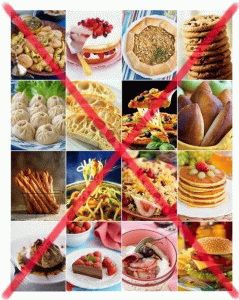
- Alcohol.
- Chocolate, some sweet foods - baked goods, especially with the addition of various dyes and substitutes.
- Coffee and tea, refrain from this at least for the first six months. Later, you can use them, but only high-quality, coffee is well brewed, tea is brewed, not in tea bags. ATTENTION! The exceptions are special teas, the so-called, which include fennel, cumin, lemon balm, anise - such teas of breast milk.
- It is necessary to refrain from semi-finished products, products with artificial preservatives and dyes, you can only use high-quality and fresh products.
- From carbonated drinks, too, should be abandoned - neither the baby nor the mother, they will not bring any benefit.
- Garlic, onions and other spicy foods.
- From smoked meat, sausage, fish.
- From fatty meat and fat.
- From legumes and black bread.
- From sauerkraut, radish, radish, fermented cheese (suluguni, cheese, Adygei), sausages, ham.
- From exotic fruits.
The diet of a woman who has chosen to breastfeed for herself and her baby requires special attention. After all, foods that can be eaten by a nursing mother affect the condition of her baby. With milk, the baby’s body receives all the elements and vitamins necessary for growth and development. Incorrectly made menu can lead to stomach disorders, allergic reactions and many other unpleasant consequences.
Healthy Diet Guide
Food affects the entire lactation process. Some products increase the amount of milk produced, some are able to reduce it. At the same time, they affect the taste of breast milk in such a way that the baby can refuse the breast at all. High-quality menu provides the development of the required volume of milk and the full development of the child.
For the correct selection of products you need:
- it is reasonable to choose food, do not overeat, because excessive nutrition entails gastric discomfort not only in a nursing mother, but also in a child;
- choose hypoallergenic products in the first 4 weeks after birth to protect the newborn from allergies;
- start experimenting with variety in the menu not earlier than the second month, the new food is consumed in small portions and the reaction child's body estimated within 2-3 days;
- drink plenty of fluids, preferably warm ones, this will stimulate the formation of milk and simultaneously clean the female body;
- treat products that contain animal protein with caution (eggs, milk);
- take into account the saturation of food consumed with essential nutrients and minerals, their deficiency slows down the rate of growth and development baby;
- abandon the fried and spicy dishes, it is better if they are steamed, stewed or baked in the oven;
- limit yourself to the flour and rich treats, as well as various sweets;
- completely remove alcohol and soda from your list of drinks;
- do not consume canned products;
- refuse mushrooms and pickles, salt and acetic acid can cause poisoning, and mushroom dishes are hard to digest;
- not to improve the taste of food by adding seasonings and spices, also abandon mayonnaise and various sauces.
What products are allowed and in what quantities?
The fact that you can eat a nursing mother, and what does not, tells the following table:
| Can | In what quantity | It is impossible |
|---|---|---|
| Beef and rabbit meat, turkey and chicken, minced poultry or beef | no more than 300 gr | Pork and smoked meats, fatty meats containing veins and bacon, sausage, ham, convenience foods and canned meat |
| Low-fat fish (such as pollock or crackling) | no more than 300 gr | Oily or salted herring or mackerel, canned fish and crab sticks |
| Sour milk products, low-fat cottage cheese | no more than half a liter of kefir, ryazhenka and others, 150 grams of cottage cheese, 30 grams of hard varieties of cheese and sour cream | Cheese in salted and melted form, cheese curds or drinks with fruit filling |
| Egg | chicken - 1 pc, quail - 4 pcs | Any eggs in the presence of allergic reactions |
| Fruit (pear, banana, apple) | no more than 300 gr | Bright red or orange exotic fruits |
| Vegetables (cucumber, potatoes, zucchini, cauliflower, parsley and dill, carefully carrots, beets and tomatoes) | no more than 600 gr | White radish, horseradish cabbage, sweet pepper, radish, basil with sage |
| Sweet and rich products (some bitter chocolate and ice cream without fillers, oatmeal cookies and biscuits, not very sweet homemade pastries) | Muffin and glazed ice cream, seasoned with various coloring fillers or other chemical compounds, wheat bread, jams and preserves | |
| Dishes from cereals (rice, buckwheat, oatmeal, corn) and pasta | no more than 150 grams | Semolina porridge and macaroni, which contains an egg |
| Sauces, vegetable oil from sunflower, olives or flax, butter | 15 grams of vegetable oil 30 grams of butter | Ketchups, sauces, mayonnaise |
| Fresh apple or carrot juice, non-carbonated drink, weak black or green tea | more than 2 l | Alcoholic or carbonated drinks, strong tea, coffee, citrus or tomato juice |
Sour milk products and milk
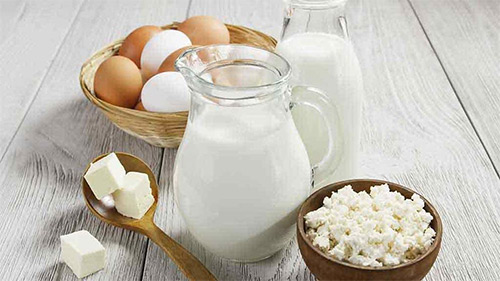
Whole milk
Acceptance of cow's milk does not affect the quality of breast milk, but the protein contained in it belongs to allergens and can harm the baby.
Doctors do not recommend drinking milk for up to five months, but in the absence of a child's tendency to allergies, it is allowed to start using it earlier.
Baked milk is included in the list of allowed products. has better digestibility and does not affect the quality of lactation. During breastfeeding, goat's milk will be suitable, but due to the specific taste, not everyone can drink it. First, all the cereals are boiled in water, porridge in milk is allowed to cook, starting from the fourth month.
Cottage cheese
There is a need for breast-feeding cottage cheese. Without it, the formation of a bone skeleton will be difficult. It is also a great stimulant for brain activity and mental processes. It is important that the cottage cheese was not impurities and additives, and even better if it is homemade.
Kefir
Some nursing mothers doubt that after taking kefir, you can continue breastfeeding, because it contains a small amount of alcohol. But its quantity is insignificant and insignificant, which does not threaten unpleasant consequences for the baby. However, children's doctors offer to include it in the diet not earlier than the child turns six months. Kefir has a positive effect on the intestinal microflora, improves the condition of hair and nails, but you should not include it in the menu more than three times a week.
Cheese
Breastfeeding product list contains cheeses. When the baby is 2 months old, solid varieties are introduced into the permitted products during breastfeeding, and later brynza or other soft and pickled types are added to them. As for processed cheese, it is desirable to refuse them.
Sour cream
Sour cream for lactating mothers is shown with a low percentage of fat, it is added to cottage cheese, salad or soup. Dairy products such as ryazhenka or sour milk also do not harm with Guards. Products purchased with nursing mothers must be fresh, so you need to additionally check the date of their manufacture at purchase.
Which fruit to choose?

The list of products allowed for lactation includes some fruits. A balanced diet can not be imagined without the inclusion of these tasty and healthy fruits. In order to choose a fruit that does not cause harm in the form of allergies, stool rashes or other troubles should:
- choose to eat fruits whose color is not bright, except for those fruits that are easily exempt from red or orange peel;
- do not abuse citrus;
- specify before use the degree of influence of the desired fruit on the state of the intestinal microflora.
Apples
In the first month after birth, you can eat apples. Pre-green fruits need to remove the skin. These fruits are very useful for blood composition and hemoglobin levels. When used regularly, apples reduce the risk of constipation.
Pears
Pears also refer to authorized foods. They promote blood formation, stabilize the heart and digestion. Despite the fact that pears are sweeter than apples, their sugar content is less. We must remember that you can not eat pears on an empty stomach, and before eating you need to peel them.
Bananas
Bananas - are allowed food when breastfeeding. If they are eaten in between meals, this is a great snack, and banana puree is suitable for breakfast. Bananas relieve insomnia, improve mood and stimulate the immune system.
Peaches
3 months after delivery, you can try peach and nectarine. There are them when breastfeeding need to be careful because of the presence of an allergen. In general, peaches protect against stress and depression, relieve swelling, improve mood.
Plums
Plums are better to pre-cook and drink plum compote, it allows you to increase the amount of milk produced, strengthen the bone system and normalizes blood circulation.
Fresh fruits and berries, grown in the season of their ripening, and not greenhouse hybrids, are well suited for feeding mothers who are nursing.
So white and yellow cherries can be eaten in the period May-August, nectarines and peaches - mid-July-September, figs - ripen from June to the end of September, in October-December persimmon, and useful grenades in stores will be from September to December.
While the child is not 3 months old, it is better if the fruit will be eaten dried or baked. This will reduce their allergen content.
How to choose vegetables?
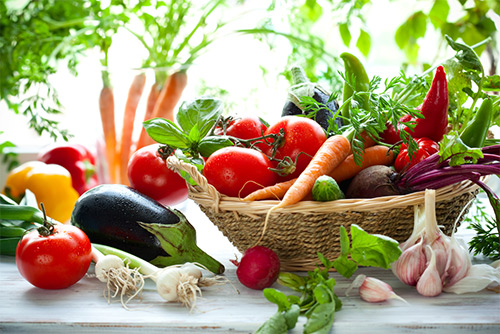
Tomatoes
All vegetables that have a red color should be treated with caution, in addition to useful elements they include pectin, which can cause strong skin rashes. But you can’t do without them.
If we talk about tomatoes, then, in general, they affect the body positively. Increase stress resistance and struggle with the formation of cancer cells, have immunostimulatory properties. To make sure that they are completely harmless, it is necessary to experiment first with the fruits of yellow shades and use them without skin.
Broccoli, cabbage
The benefits of broccoli and cauliflower are known to all. Their use can not harm nursing babyon the contrary, vitamin C will help improve mood and strengthen the immune system of the crumbs, fighting viral infections and stress. This is not the case with cabbage. It is hard to digest and threatens the child with digestive disorders.
Zucchini
Allowed to feed lactating mothers from the first days after birth. They contain a large amount of vitamins and nutrients, they help cleanse the body and cope with overweight, reduce blood pressure and normalize the activity of the nervous system.
Cucumbers
Very carefully you need to be in use to avoid unpleasant manifestations from the pancreas. During lactation, preference should be given only to fresh young cucumbers with the highest content of vitamin C. This vegetable helps in getting rid of excess fluids and cleansing the kidneys, improves the condition of the heart muscle and increases resistance to stressful situations.
Nursing mothers banned cucumbers in pickles and pickled pickles. They hold the liquid, lead to poisoning. But in pickle, after heat treatment, pickled cucumbers lose this property, therefore, with GW, after half a year, it is completely allowed to use it.
Carrot
The carrot, which improves visual functions and skin, should be introduced into food during breastfeeding with care, as may cause allergic reactions.
Eggplant
The list of products that need to be eaten with caution in the period of the Guards also includes eggplants. They are not prohibited, but allowed to be eaten after 3 months of a baby’s life in moderation. Eggplants improve the metabolic processes in the body, stimulate the kidneys, liver, digestive system. Eating eggplants will help babies cope with constipation.
Beet
Another natural remedy for constipation - beets. The main thing is not to overdo it. It should be present in the diet in small quantities to improve digestion, develop and strengthen the skeleton.
Vegetables that can be eaten by a nursing mother should be properly steamed, steamed, baked, or stewed. To eat fresh fruits, they must be rinsed well.
What drinks are preferable?
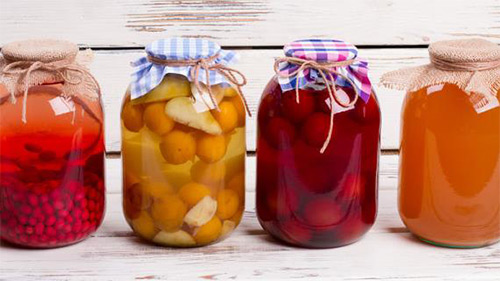
The list of foods and drinks allowed for breastfeeding increases by months. During the first four weeks of a child’s life, it is not advisable to drink something other than plain water and green tea as a drink.
Clean non-carbonated water should be drunk throughout the entire period when the baby is applied to her mother's breast. Green tea has a tonic effect, which is important for coffee lovers, which is included in the list of prohibited foods for nursing mothers. In addition, this drink contributes to the production of milk.
During the second month, black tea, freshly squeezed juice from apples and carrots are excluded from the registry of “prohibited foods”. It is important that the strength of the tea is not strong, and water is added to the juices, they are diluted twice. Gradually reduce the amount of water. Under the ban is the juice of tomatoes, oranges, grapefruits and exotic fruits.
Perfectly quench thirst and replenish vitamin reserve berry compotes. Also suitable for making compotes are fresh fruits and: apple, pear, plum, dried apricots, prunes and raisins. It is better not to use all possible berries of bright color to make a drink. Currants, strawberries or strawberries can cause allergies in a child.
Dairy products can be consumed with great care, it is better not to introduce them into the diet before 6 months after birth. Also for six months, a ban on coffee. It has a stimulating effect on nervous system baby and increases anxiety. For those who feel without coffee, a chicory drink is uncomfortable.
It is strictly forbidden to drink alcoholic and carbonated drinks while breastfeeding. They, of course, harm the body of a woman, and irreversible damage is caused to the health of the infant.
What is to enhance lactation?
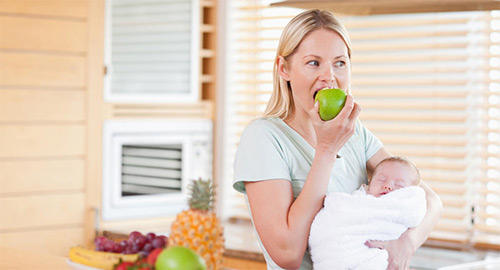
The amount of milk produced depends on the measures taken by the mother to preserve and increase lactation. This requires regular attachment of the baby to the breast, choose to feed correct posture, monitor the condition of the breasts and nipples, wear special bras, give the breast to the child at will, especially at night.
For lactation is very important enhanced drinking mode, especially well stimulate the production of breast milk warm drinks. A number of products that are allowed during breastfeeding can also contribute to this process. How to lose weight after giving birth?
How to lose weight after giving birth?
Many women after childbirth are faced with the problem of the appearance of excess weight. Someone, he appears even during pregnancy, someone - after childbirth.
- And now you can not afford to wear open swimsuits and short shorts ...
- You start to forget those moments when men complimented your flawless figure ...
- Every time you come to the mirror, it seems to you that the old days will never return ...
A nursing mother often hears a lot of advice and guidance on what can and cannot be eaten during breastfeeding. Sometimes the so-called diet comes to the point of absurdity, when a woman eats mainly buckwheat and galetny cookies. How to find a middle ground in this issue? What should be the diet so that it brings the maximum benefit to both the mother and the child? This is our article.
What is meant by diet?
First of all, you need to find out what we are putting into the concept of "diet." Yes, it is, of course, some restrictions in the use of certain foods. However, how tough should they be? It should be noted that in many developed countries, such as Germany, Sweden, USA, Israel, Great Britain, doctors do not prescribe any diet to a nursing woman, they give recommendations on healthy eating!
Principles of proper nutrition
- Drinking regimen implies drinking at least 2 liters of liquid per day. It is better if it is ordinary water, slightly sweet compotes of dried fruit, weak teas, fruit drinks.
- It is imperative to get rid of nicotine addiction, if it exists, and also to refrain from alcohol and caffeine.
- Products-allergens are introduced over time and very carefully: 1 product (a small portion) in three days, after which they observe the reaction of the newborn baby.
- In countries where it is customary to eat spicy food, the first three months should be abandoned from hot spices.
- A balanced diet when feeding involves the inclusion in the diet of meat, dairy products, fruits and vegetables in reasonable quantities.
- Flour and sweet can eat, but in limited quantities.
- Prohibited fatty foods, smoked meats and pickles, carbonated drinks.
Thus, a diet for a woman who is breastfeeding, in practice, involves proper nutrition, healthy and balanced. Of course, it should be diverse. Especially mother needs foods rich in calcium and iron. Calcium is necessary for the baby, because his musculoskeletal tissue develops intensively. Iron plays an important role in the formation of hemoglobin, so necessary to saturate the body with oxygen.
How often to eat
It is better to eat a little, but more often. It is not necessary to count the calories eaten, listen to your body. He will tell you which of the products you are now especially needed (of course, from the permitted ones). During breastfeeding, preference is given to food prepared by the steam method or by boiling, stewing.
Milk production mechanism
To distinguish good advice about breastfeeding from useless, it is important to understand the physiology or, in other words, the mechanism of milk production. So, two hormones are responsible for good lactation: oxytocin and prolactin. When the baby sucks the breast, the nerve endings located on the areola and the nipple, give the brain a signal that triggers the production of these two hormones.
Prolactin is responsible for the amount of milk produced, most of all it is formed from 3 to 8 in the morning. Therefore, to obtain a sufficient amount of milk, three conditions must be observed: proper attachment to the breast (with full nipple grip), frequent attachment and night feedings.
Oxytocin monitors the contraction of the muscles around the lobules of the mammary gland, that is, it is responsible for the pumping process. The action of oxytocin is popularly called the “tide” of milk. When the first weeks of feeding milk flows from the free breast, which is not being fed at the moment, this is the work of oxytocin. The emotional state of a woman greatly influences its production, since the adrenaline released during stress suppresses the action of oxytocin.
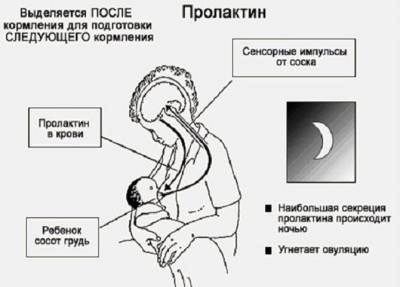
Special hormones are responsible for lactational success.
Mother's milk is always of high quality and contains everything necessary for the baby. The body primarily supplies the baby, and if no substances come from the mother’s food, it will take them from its resources. Only in this case, the mother herself will suffer.
Limit or remove products from the risk group
Allergies
Admission to the blood, and, therefore, in breast milk, foreign protein can cause an allergic reaction, especially if one of the parents has a tendency to allergies (hereditary factor). Cow's milk leads the list. It is not at all suitable for feeding newborns, and may cause abdominal pain, along with allergies. A good alternative is fermented milk products, which are not only safe, but also useful. Allergies can be on such products:
- eggs;
- seafood:
- red fish;
- citrus;
- fruits and vegetables with red pigmentation;
- products with flavor enhancers and preservatives (chips, crackers, salted nuts);
- nuts;
- coffee, chocolate, cocoa-containing products.
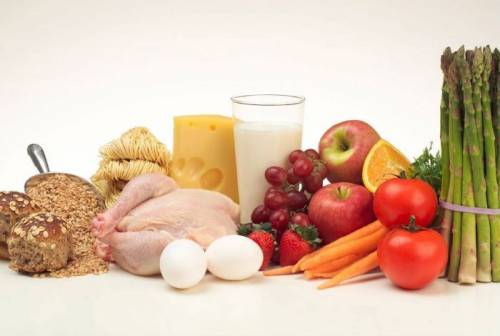
Food should be varied and contain all the necessary elements.
This does not mean that the listed products are taboo. Just they can not get involved. For example, if a mother eats 4 strawberries from her garden bed with the certainty that she is unprocessed, it is not clear what, nothing criminal will happen. Only for three days we monitor the baby for rashes. But crackers and the like is always bad, and not only for the baby, but also for the mother. Get used to healthy eating.
Those that cause increased gas formation
As is known, the child’s digestive system is only being formed and often newborn children are tormented by intestinal colic. In order to keep such agony to a minimum, limit consumption in the first months:
- fresh white cabbage;
- fresh apples;
- black bread;
- legumes;
- luke;
- cucumbers;
- pepper.
Those that affect the taste of milk
These include:
- onion garlic;
- seasonings.
Cereals
Cereal cereals (made from wheat, barley, rye) contain gluten. This protein carries a potential hazard for some genetically predisposed newborns. They develop an inflammatory reaction to gluten that affects the walls of the small intestine. The disease is known as celiac disease. Therefore, it is better for a nursing woman to eat gluten-free cereals (buckwheat, rice).
Herbs
Herbal teas are becoming popular to drink to increase lactation, but some of them are fraught with danger. It is important not to forget about the pharmacological properties of what you drink:
- Hawthorn - can lower pressure.
- Ginseng - tonic effect can lead to insomnia, chest pain is possible.
- Melilot - contains substances that impair the quality of blood clotting.
- Chamomile, hop cones, sage, walnut leaves - do not stimulate, but suppress lactation abilities.
Common Myths
"Breastfeeding mom should eat for two." Let's not forget that this “second” is still very tiny, so it’s perfectly normal if the mother’s diet includes 500 calories, not more. It will be quite simple to eat at will, adhering to the same recommendations as during pregnancy: split meals, but frequent. Since the first time the feeling of hunger literally pursues a nursing woman, you can take care of a little snack and drink for the night.
"Too much milk: you need to drink less." We have already found out that the tides of milk do not depend on the displacement of the liquid consumed, but on the effects of the hormones responsible for lactation. Reducing fluid intake can only lead to dehydration.

Sweet in moderation - you can!
"To have plenty of milk, you should drink a half-liter mug of tea before each feeding." This is the same delusion as the previous one. Judge for yourself: if a mother feeds on demand about 8 times a day, it is easy to calculate that the “tea rate” will be 4 liters. Is it a bit much?
Such a misconception is caused by the fact that the intake of hot fluid for 15 minutes before feeding stimulates the production of oxytocin and rush to the breast. Milk no longer becomes, but the baby is easier to suckle. Therefore, drinking hot can and should be, but as much as you want.
"You can not eat onions and garlic - the baby refuses milk." Although these products can influence the taste of milk, but as a rule, it doesn’t really bother hungry children.
"To get fat milk, you need to eat fat." If there is some truth in this statement, then it is quite scanty. In fact, to get full-fat milk, all you need to do is to keep the crumb on one breast until it is victorious until it drinks everything. The fact is that initially mother's milk, called "front", quenches thirst, and only after the baby gets drunk does the "back" milk begin to flow - fatty and nutritious.
“The child has pimples - what did you eat mom ?!”. Yes, pimples in an infant can be caused by allergies, as a manifestation of the reaction to the product eaten by mom. But this is not in every case. There are many other reasons why a baby may be sprinkled: wrong laundry detergent, water from a water supply system, pet hair, prickly heat, etc.
"Sweet - in no case!". Nothing like this. Carbohydrates are essential for milk production and for mom's good mood. Of course, the sweet list for the first time is very limited, and nevertheless, biscuit, candy, always welcome.
"A vegetarian mom cannot eat fully during breastfeeding." This is not true. In this case, the woman needs more sources of protein foods, such as legumes. It is useful to eat whole grains, germinated seeds. Fats are obtained from olive and sunflower oils. Calcium most in the following plant foods:
- dill, parsley, onion;
- raisins, apricots;
- spinach, cabbage;
- pumpkin, carrot, beet;
- almonds and walnuts.
In principle, all vitamins can be obtained from plant foods, except for B 12. In addition, a vegetarian mother is recommended to take multivitamins sold in pharmacies.
To feed children with mother's milk is not only beneficial, but also pleasant. This allows a woman to open up fully, to feel the beauty of motherhood. And yet, as it turned out, breastfeeding is a great reason to adjust the menu of the whole family in the direction of healthy eating.